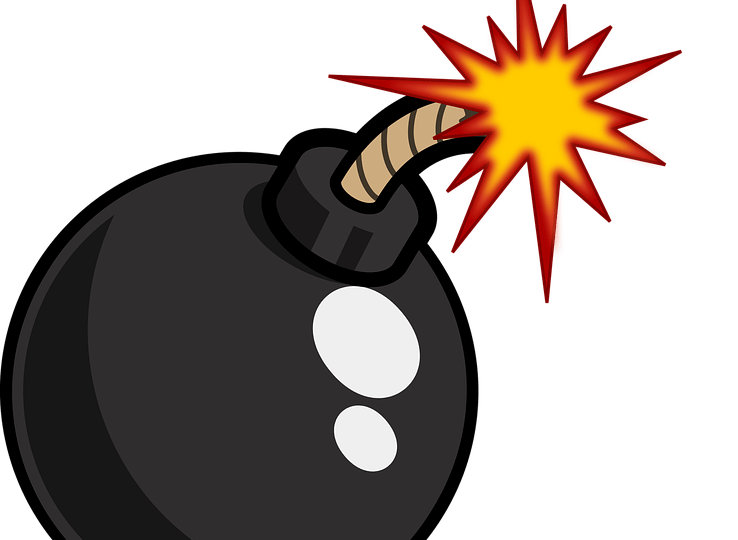by Helen Johnston
At AVM’s Risk factor event Helen Johnston shared how she established a flexible volunteering model while successfully managing the risks that archaeological fieldwork can dig up.
It’s Crimbo Limbo, the gap between Christmas and New Year, I’m on the sofa under a blanket, contemplating another rummage through the Quality Street tin to see if there’s any of the good ones left, idly scrolling through Facebook. And then, there it is, one of my worst-case scenarios: a photo of one of our volunteers flanked by two police officers (all smiling thankfully!), and the next one, a close-up of what looks like a rusty bit of scaffolding pole. I know immediately what it is and why the police are involved; it’s unexploded ordnance, left over from one of the World War bombing campaigns. Chocolate forgotten, I shake off my sofa-haze to find out what’s happened and make sure everyone’s safe.

Unexploded WWII incendiary bomb we found on the Southbank under the Millenium Bridge in 2016 – Photo by Nathalie Cohen
At Thames Discovery Programme, we run a flexible volunteering programme to monitor and record vulnerable archaeology on the Thames’ foreshore, the area which is revealed at low tide. As well as running fieldwork coordinated centrally, we have groups of volunteers who organise themselves to regularly monitor particular sites on the river. But the foreshore is not a safe environment, and there are many risks that need to be considered when working there.
On that lazy Saturday afternoon, a couple of our volunteers decides to make a last-minute visit to Fulham, the site of an ancient river crossing, to check on the interesting prehistoric archaeology there which is under threat from erosion. It’s matchday, and fans are streaming through the nearby park for a Fulham Palace home game. As the tide begins to come in, the volunteers are making their way back to the steps when they notice something that, thanks to their training, they immediately recognise as potentially an unexploded bomb.
Unexploded ordnance is not an uncommon find on the Thames; London was heavily bombed in World War 1 and World War 2, and the river wall was deliberately targeted to try to flood the city. At Thames Discovery Programme we come across possible ordnance every year or two, and so our volunteer training includes what to do if you find a bomb.

Thames Discovery Programme volunteers marking out a bomb crater on the Isle of Dogs – Photo by Nathalie Cohen
In this case our volunteers do all the right things, they leave it where they found it, call the Police and move away from the area. When the Police arrive, there’s a bit of discussion about whether it’s a rusty aerosol can before they make the decision to call in the bomb squad. The river is cordoned off, the last of the football fans are kept out of the area, and the device, which is identified as a WW1 incendiary bomb, is safely removed to be disposed of somewhere a long way away. By the time I find out about the incident on Facebook that evening, it’s all over, and everyone involved is back home. I check in with the volunteers over email to make sure they’re all ok, finding things like this can be unnerving. They were fine and they’d already sent us a full account of what happened, including pictures!
About Helen
Helen Johnston has over 15 years experience of creating and delivering volunteering programmes. Her current portfolio of work includes leading an archaeological volunteering project and supporting small charities.






One comment